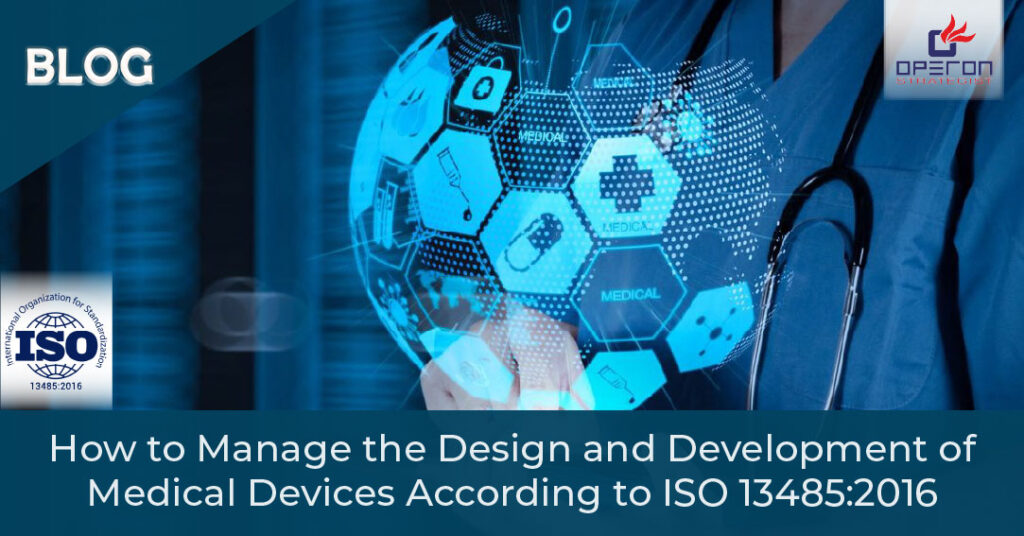
In the competitive USA medical device market, managing the design and development of medical devices isn’t just about innovation—it’s about compliance, patient safety, and market approval. ISO 13485:2016 provides a globally recognized framework to ensure your product meets both customer needs and regulatory requirements.
Whether you’re a startup developing your first prototype or an established manufacturer upgrading your portfolio, understanding and implementing ISO 13485:2016 design and development requirements can mean the difference between a smooth approval process and costly delays.
In this guide, we’ll walk you through how to manage the design and development of medical devices according to ISO 13485:2016, ensuring compliance while positioning your product for success in the US market.
Why ISO 13485:2016 Matters for Medical Device Design and Development
ISO 13485:2016 is the international standard for Quality Management Systems (QMS) specific to medical devices. For US manufacturers, it aligns closely with FDA requirements under 21 CFR Part 820, making it a powerful tool for achieving both quality assurance and regulatory compliance.
Key benefits of aligning your design and development of medical devices with ISO 13485:2016 include:
Step-by-Step Approach to Managing the Design and Development of Medical Devices Under ISO 13485:2016
The standard’s Clause 7.3 lays out clear requirements for design and development. Here’s how to manage the process effectively.
1. Establish a Design and Development Plan
Your journey starts with a detailed Design and Development Plan that outlines:
- Stages of development (concept, prototyping, verification, validation, transfer to production).
- Responsibilities of each team member or department.
- Review checkpoints to ensure each stage meets defined objectives.
- Interfaces between different teams (R&D, quality, regulatory, manufacturing).
A strong plan keeps your project on track and ensures compliance is built into every stage—not added as an afterthought.
2. Define and Document Design Inputs
Design inputs are the foundation of your product. These must be clear, measurable, and derived from:
- Customer requirements and user needs.
- Regulatory requirements applicable to your device type in the USA.
- Risk management considerations under ISO 14971.
- Performance specifications for safety, functionality, and usability.
Pro tip: Involve cross-functional teams early to capture requirements from engineering, quality, marketing, and regulatory perspectives.
3. Develop and Record Design Outputs
Your design outputs should meet all inputs and be verifiable against them. This includes:
- Product specifications.
- Engineering drawings and manufacturing instructions.
- Software code (if applicable).
- Packaging, labeling, and IFUs (Instructions for Use).
Documenting outputs in a way that allows traceability to inputs is essential for both ISO 13485 audits and FDA inspections.
4. Conduct Design Reviews at Defined Stages
Design reviews are formal checkpoints where the project team assesses:
- Compliance with design inputs.
- Progress towards regulatory and market requirements.
- Risk mitigation effectiveness.
These reviews should involve independent participants (not just the project team) to ensure objectivity.
5. Perform Design Verification
Design verification confirms that your outputs meet the inputs. Common verification methods include:
- Laboratory testing.
- Inspection of components and assemblies.
- Analytical calculations and simulations.
Example: If your design input specifies a catheter must withstand 10 lbs of tensile force, verification would involve tensile testing to confirm compliance.
6. Carry Out Design Validation
Design validation ensures that the device meets user needs and intended use in real or simulated conditions. This often involves:
- Clinical evaluations.
- Usability studies.
- Field testing.
Validation must be performed on production-equivalent units and documented thoroughly for audit readiness.
7. Control Design Changes
Changes are inevitable in medical device design and development. ISO 13485:2016 requires:
- Documenting the reason for change.
- Evaluating the impact on risk, regulatory compliance, and other parts of the design.
- Obtaining proper approvals before implementation.
This disciplined approach prevents unintended consequences that could compromise safety or compliance.
8. Maintain a Design History File (DHF)
In the USA, the FDA mandates a Design History File for each medical device. ISO 13485:2016 supports this requirement by ensuring all design and development records are:
- Complete.
- Traceable.
- Accessible for audits and inspections.
The DHF is your proof that the device was developed according to approved processes and regulatory requirements.
Common Pitfalls in Managing Medical Device Design and Development
Even experienced manufacturers can stumble. Watch out for:
- Incomplete documentation that leaves gaps in traceability.
- Skipping reviews or validations to save time—leading to costly rework.
- Poor change control resulting in compliance issues.
- Neglecting risk management throughout the process.
Addressing these pitfalls early saves time, money, and reputation.
Best Practices for USA Medical Device Companies
For companies targeting the US market, consider these additional best practices:
- Align with FDA 21 CFR Part 820 while implementing ISO 13485:2016 to streamline submissions.
- Integrate ISO 14971 risk management into every stage.
- Leverage digital QMS tools for efficient document control, traceability, and audit readiness.
- Engage regulatory consultants early to avoid last-minute surprises.
Need Help Navigating ISO 13485 Design Controls?
How We Can Help?
At Operon Strategist, we specialize in guiding USA-based medical device companies through the complexities of design and development under ISO 13485:2016. From creating compliant design plans to managing your DHF, we ensure your product is ready for both regulators and the market.
Our services include:
- Gap analysis and QMS implementation.
- Design control documentation support.
- Risk management integration.
- Regulatory submission assistance (FDA, CE, UKCA, and more).
Ready to take the next step?
Contact Operon Strategist today for expert ISO 13485:2016 design and development consulting tailored to USA medical device companies.
